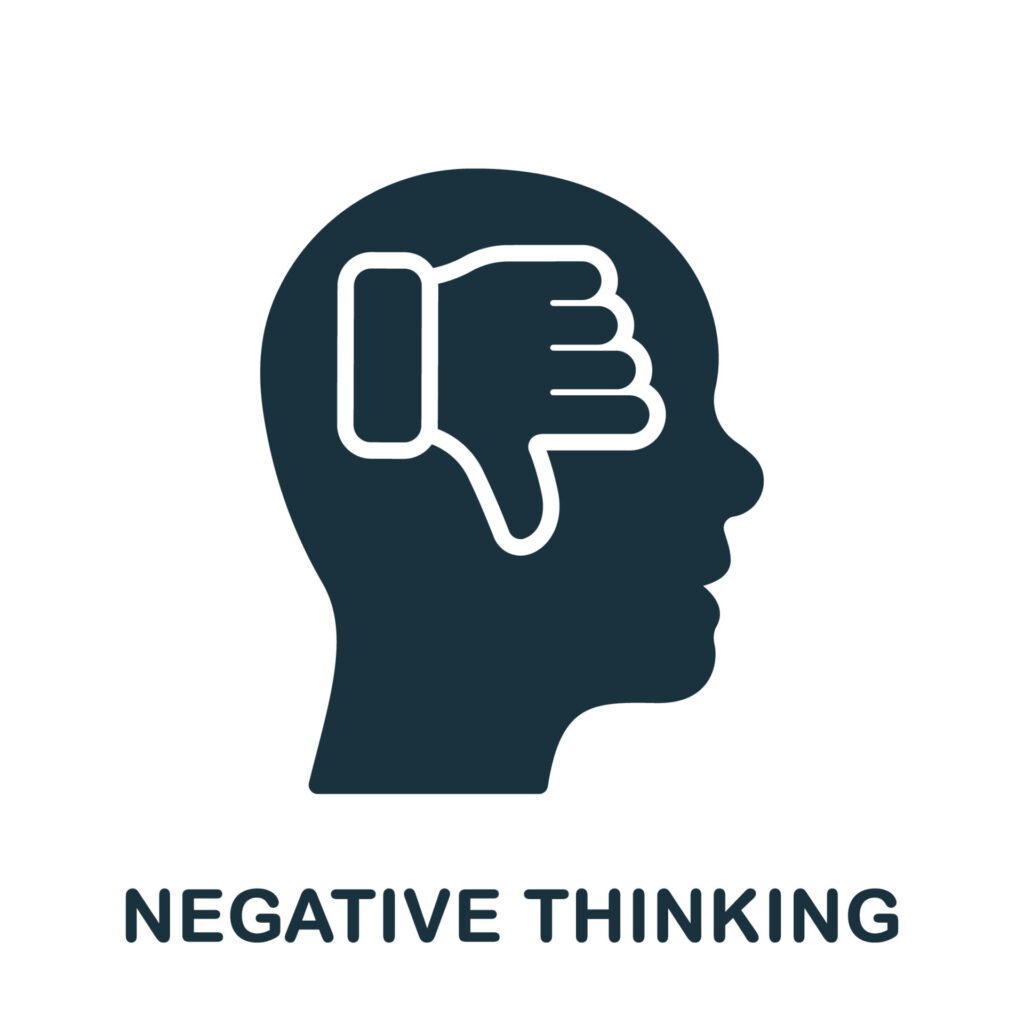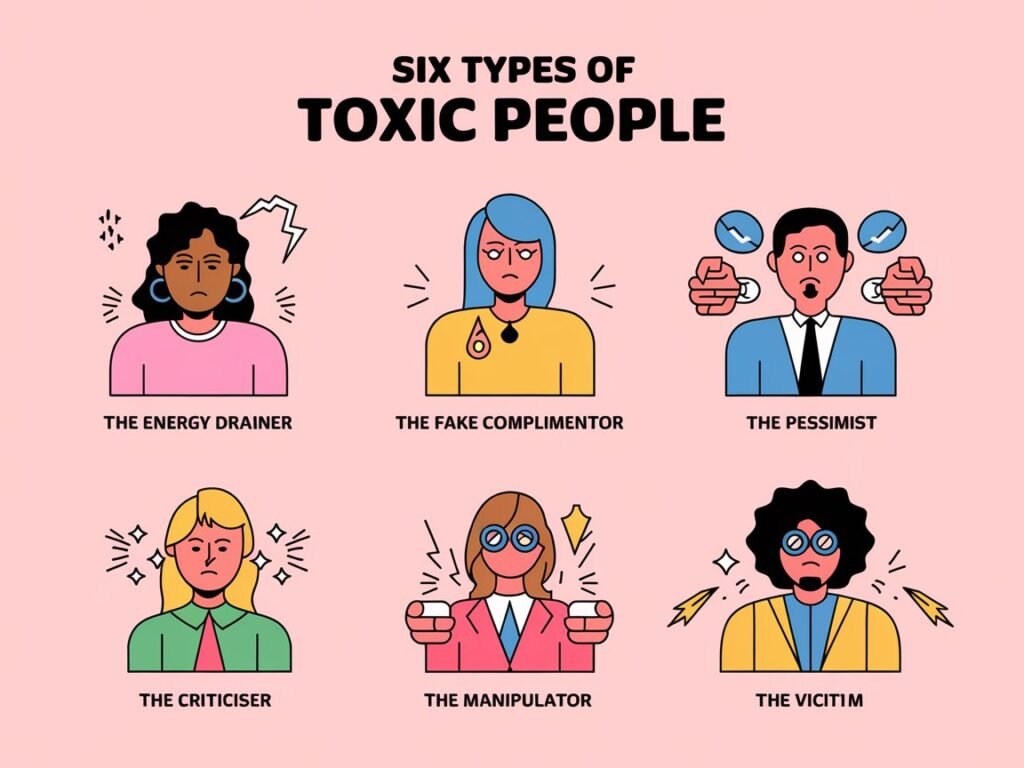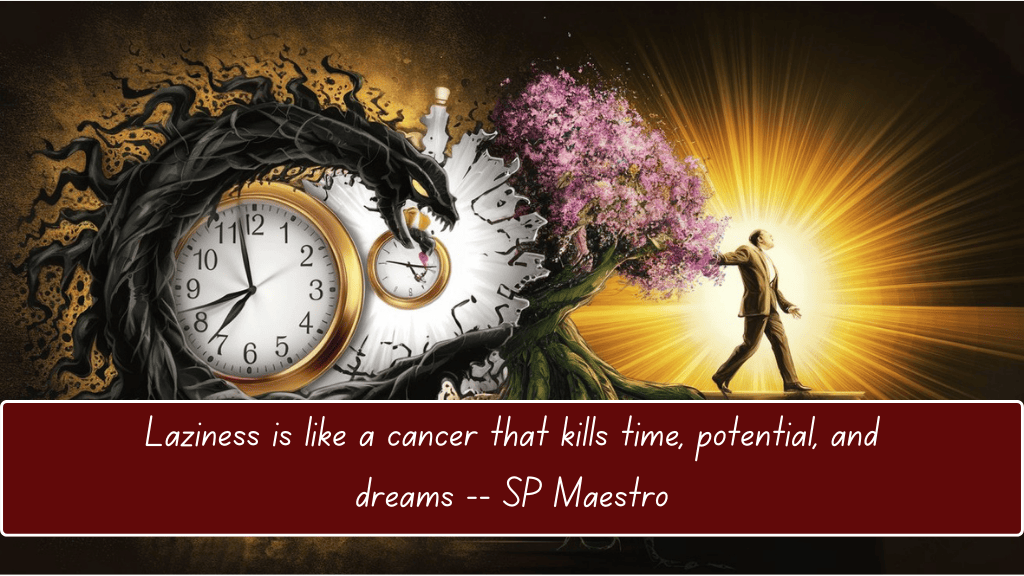In our pursuit of positivity, success, and peace, we often encounter individuals who disrupt our emotional balance and drain our energy. These toxic people can appear as friends, colleagues, or even family members. Recognizing them early is crucial to setting boundaries and safeguarding your mental well-being.
In this article, we’ll explore six types of toxic people to avoid, how to identify them, and strategies to protect yourself from their negative influence.
1. The Energy Drainer

Who They Are:
These individuals constantly take from you—your time, emotions, and mental energy—without giving anything back. They perpetually seek attention and emotional support but rarely reciprocate. These kind of people are the toxic People to avoid
How to Identify Them:
- Conversations leave you feeling emotionally exhausted.
- They always present problems without seeking solutions.
- They seek sympathy but resist changing their situation.
How to Deal with Them:
- Set clear emotional boundaries.
- Limit interactions to prevent burnout.
- Encourage them to seek professional help if necessary.
Real-Life Example: Consider Priya, who had a friend named Anjali. Anjali frequently called Priya to vent about her issues but showed little interest in Priya’s life. After their conversations, Priya often felt drained and anxious. Recognizing this pattern, Priya decided to limit their interactions and suggested Anjali seek professional counseling. This decision helped Priya reclaim her emotional energy and focus on more balanced relationships.
2. The Fake Complimenter

Who They Are:
This person offers insincere compliments, often with a hidden agenda to gain favor or manipulate you subtly. Fake Complimenters are also the toxic People to avoid
How to Identify Them:
- Their compliments feel exaggerated or forced.
- They praise you publicly but criticize you privately.
- Their words seem insincere or transactional.
How to Deal with Them:
- Trust actions more than words.
- Be aware of their motives.
- Distance yourself when their intentions appear manipulative.
Real-Life Example: Ravi worked with a colleague, Suresh, who frequently praised Ravi’s work in team meetings but undermined him in private conversations with their manager. Recognizing Suresh’s duplicity, Ravi chose to document his work meticulously and maintain professional boundaries, ensuring his contributions were transparent and acknowledged by others.
3. The Pessimist

Who They Are:
Pessimists have a consistently negative outlook, focusing on problems rather than solutions. Their defeatist attitude can dampen the enthusiasm and optimism of those around them. These are the other kind of toxic people to avoid.
Real-Life Story:
Emily shared her experience with her friend, Karen, who always anticipated the worst outcomes. When Emily discussed her plans to start a new business, Karen enumerated potential failures and obstacles, causing Emily to second-guess her ambitions. Emily realized that Karen’s negativity was hindering her confidence and decision-making.
How to Identify Them:
- Negative Forecasting: They habitually predict unfavorable outcomes.
- Criticism of Aspirations: They discourage you from pursuing new opportunities.
- Resistance to Positivity: They dismiss or undermine positive experiences or ideas.
How to Deal with Them:
- Limit Exposure: Reduce time spent in their negative sphere.
- Reinforce Positivity: Surround yourself with individuals who uplift and encourage you.
- Assert Boundaries: Politely steer conversations away from negative topics.
4. The Criticizer

Who They Are:
Criticizers are also toxic people to avoid, as they habitually find faults in others, offering unconstructive criticism that can erode self-esteem and confidence. Their remarks often reflect their own insecurities, projected onto those around them.
Real-Life Story:
Laura recounted working under a manager, Mike, who incessantly pointed out her mistakes without providing constructive feedback. His constant criticism led Laura to doubt her capabilities, affecting her performance and mental health. Recognizing this toxic dynamic, Laura sought employment elsewhere, where her skills were acknowledged and appreciated.
How to Identify Them:
- Constant Fault-Finding: They rarely acknowledge positives, focusing solely on negatives.
- Lack of Constructive Feedback: Criticism isn’t accompanied by helpful suggestions.
- Comparative Remarks: They make unfavorable comparisons to belittle others.
How to Deal with Them:
- Maintain Self-Worth: Remind yourself of your strengths and achievements.
- Seek Constructive Input: Engage with those who offer balanced and helpful feedback.
- Distance Yourself: Minimize interactions with individuals who consistently undermine your confidence.
5. The Manipulator

Who They Are:
Manipulators employ deceit and cunning to control situations and people to their advantage. They may use guilt, flattery, or misinformation to achieve their objectives, often at the expense of others’ well-being.
Real-Life Story:
David described his relationship with a business partner, Alex, who frequently twisted facts to serve his agenda. Alex would guilt-trip David into taking on extra work, implying that David wasn’t committed enough. Over time, David recognized these manipulative tactics and decided to dissolve the partnership to protect his professional integrity.
How to Identify Them:
- Emotional Exploitation: They use guilt or sympathy to influence your actions.
- Inconsistencies: Their stories or promises often don’t align with reality.
- Pressure Tactics: They rush you into decisions, limiting your time to think critically.
How to Deal with Them:
- Establish Firm Boundaries: Clearly communicate your limits and stick to them.
- Verify Information: Cross-check facts before acting on their suggestions.
- Empower Yourself: Practice assertiveness and don’t hesitate to say no when necessary.
6. The Victim

Who They Are:
Individuals with a victim mentality perpetually see themselves as the wronged party, attributing their misfortunes to external factors. They resist taking responsibility and often seek pity rather than solutions.
Real-Life Story:
Monica shared her experience with her cousin, Rachel, who constantly lamented about her life’s difficulties but rejected any advice offered. Rachel’s refusal to take proactive steps created a cycle of negativity that began to affect Monica’s own outlook. Monica realized she needed to set boundaries to preserve her mental health.
How to Identify Them:
- Chronic Complaining: They frequently express dissatisfaction without seeking change.
- Deflection of Responsibility:
Also go through the below interesting content:
-
 Emotional Intelligence: 15 Powerful Signs That Will Transform Your Leadership Success
Emotional Intelligence: 15 Powerful Signs That Will Transform Your Leadership Success -
 Walking Daily: 15 Amazing Health Benefits That Will Transform Your Life
Walking Daily: 15 Amazing Health Benefits That Will Transform Your Life -
 18 Personality Types That Will Transform Your Self-Understanding
18 Personality Types That Will Transform Your Self-Understanding -
 Personal Transformation: 5 Powerful Steps to Bridge Thoughts Into Life-Changing Results
Personal Transformation: 5 Powerful Steps to Bridge Thoughts Into Life-Changing Results -
 Japanese Techniques to Stop Overthinking: 4 Powerful Ancient Methods That Will Transform Your Mental Peace
Japanese Techniques to Stop Overthinking: 4 Powerful Ancient Methods That Will Transform Your Mental Peace -
 Soft Skills: 15 Essential Do's and Don'ts That Will Transform Your Career Success
Soft Skills: 15 Essential Do's and Don'ts That Will Transform Your Career Success -
 Boss vs Leader: 12 Powerful Traits That Transform Toxic Managers Into Inspiring Leaders
Boss vs Leader: 12 Powerful Traits That Transform Toxic Managers Into Inspiring Leaders -
 CEO Habits: 26 Essential Practices That Transform Ordinary Leaders into Extraordinary Visionaries
CEO Habits: 26 Essential Practices That Transform Ordinary Leaders into Extraordinary Visionaries -
 Brain Myths: 10 Astonishing Misconceptions Exposed That Hold Back Your Mental Potential
Brain Myths: 10 Astonishing Misconceptions Exposed That Hold Back Your Mental Potential -
 Bedtime Affirmations: 51 Powerful Statements for Peaceful Sleep and Positive Mindset
Bedtime Affirmations: 51 Powerful Statements for Peaceful Sleep and Positive Mindset
Also visit our below websites
A spiritual website filled with inspiring content to help you deepen your understanding of mindfulness and living in the present. Explore their teachings to enrich your journey toward inner peace.
A platform dedicated to motivating and uplifting the spirit of youth. If you’re looking for ways to inspire younger generations to embrace the present, this is a fantastic resource.
A spiritual website with inspiring content centered around the idea of “Universal Oneness.” Their teachings align beautifully with the art of being present and finding happiness in every moment.



